Over the past week, I encountered a few advertisements that I found lacking in the quality of information they provide. In this fact check post, I will discuss the advertisements and why I believe they are not helpful to consumers.
Example #1
The first advertisement was found in one of the Facebook MQB/Mk7 Classifieds groups.
At first, I thought I was reading a consumer posting a used part for sale since it began with the absurd claim:
Best DP available for the Mk7 platform.

This claim is ridiculous because there are no standard criteria for determining the ‘best‘ downpipe. On top of that, the level of effort to test all of the products available for the Mk7 platform would exceed the time and costs anybody would be willing to expend.
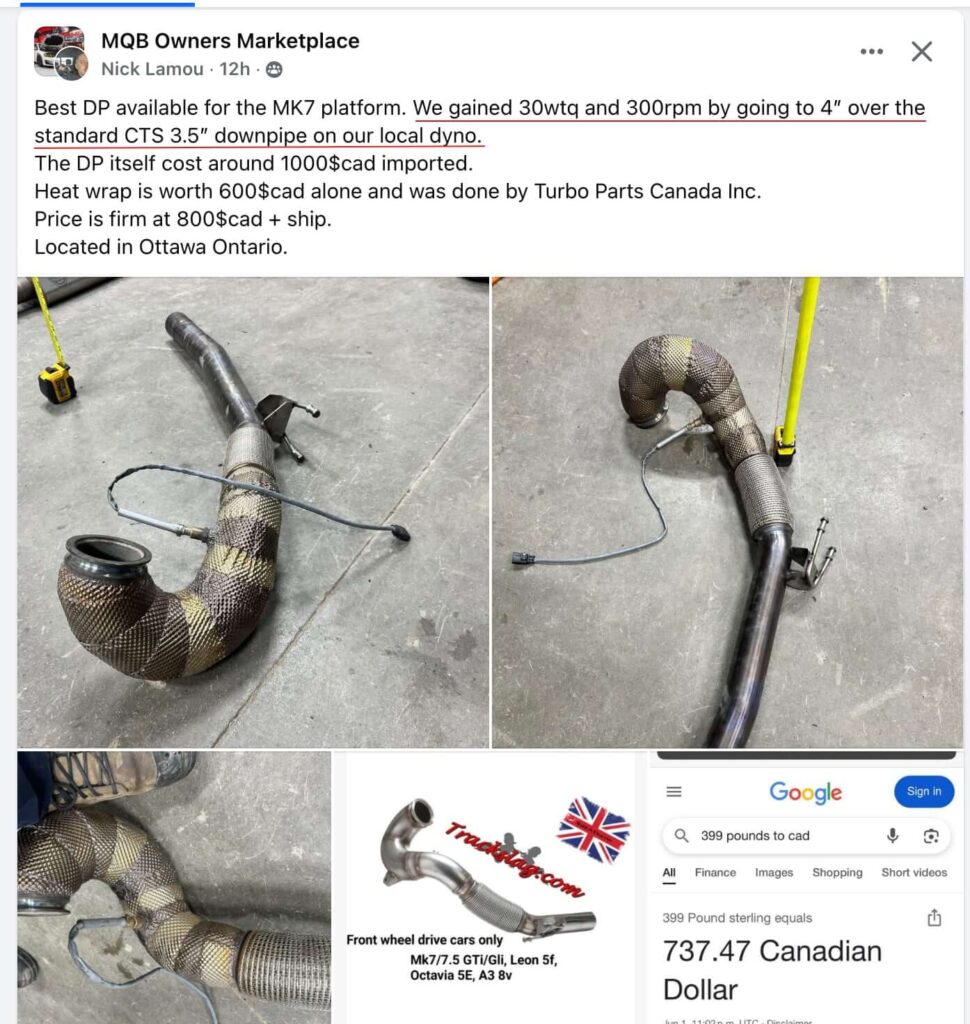
The claim is the type of stuff you see from consumers who don’t think about what they are writing. However, they then went on to say that they recorded performance gains on a dyno with the downpipe, which piqued my interest in learning more about the seller.
It turned out that the seller was the Owner of Turbo Parts Canada, a vendor that supplies turbochargers and other products and services for the Mk7.
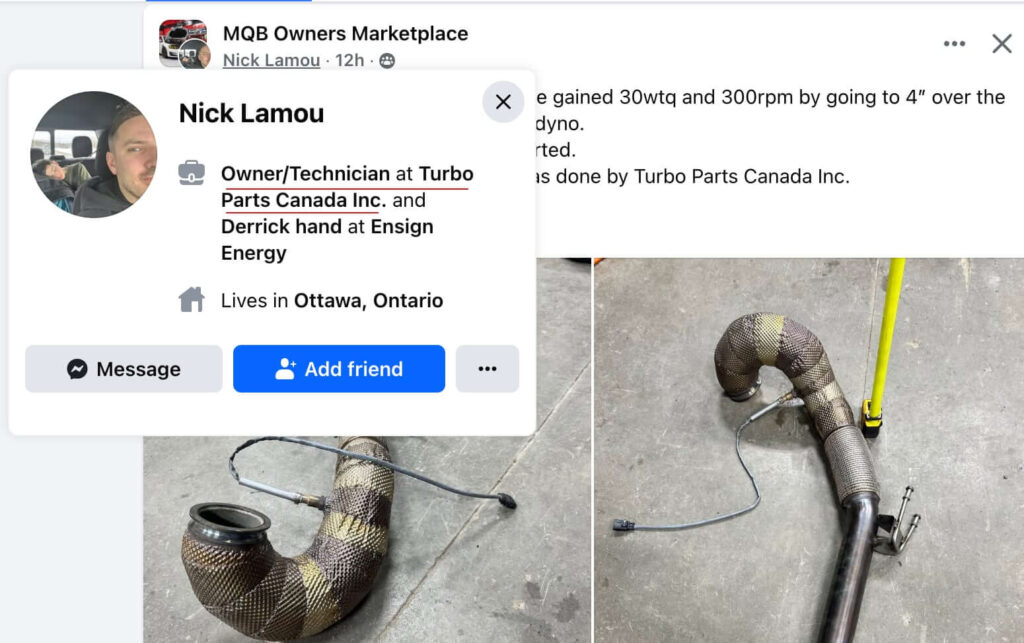
Now, I’m thinking this person should know better than to claim one brand DP is the best, but I realize I am dealing with an aftermarket automotive parts vendor, and the degree to which these companies adhere to truth in advertising laws varies.
The objective performance claim is a more significant issue. An improvement of 30 WTQ and faster boost response by 300 RPM are significant versus the CTS 3.5″ downpipe, but if the CTS downpipe were catted and compared with a catless downpipe, those improvements are possible.
The ad did not provide sufficient information about the CTS downpipe, so I asked if it was catted, and the seller indicated it was not.
This answer raised doubts about the claimed difference.
These two products are functionally almost identical. While one is labeled as a 4″ DP and the other a 3.5″ DP, these measurements only reflect the first 180-degree bend off the turbocharger turbine. After that, they both neck down to 3″ and maintain that diameter to the outlet of the DP. A 1/2″ difference in diameter for the first foot or two of piping is not going to yield a 30 FT-LB increase in torque and shift boost onset by 300 RPM.
These are the types of changes possible when switching from a high-flow catted downpipe to a catless, something I have measured both at the component and vehicle levels.
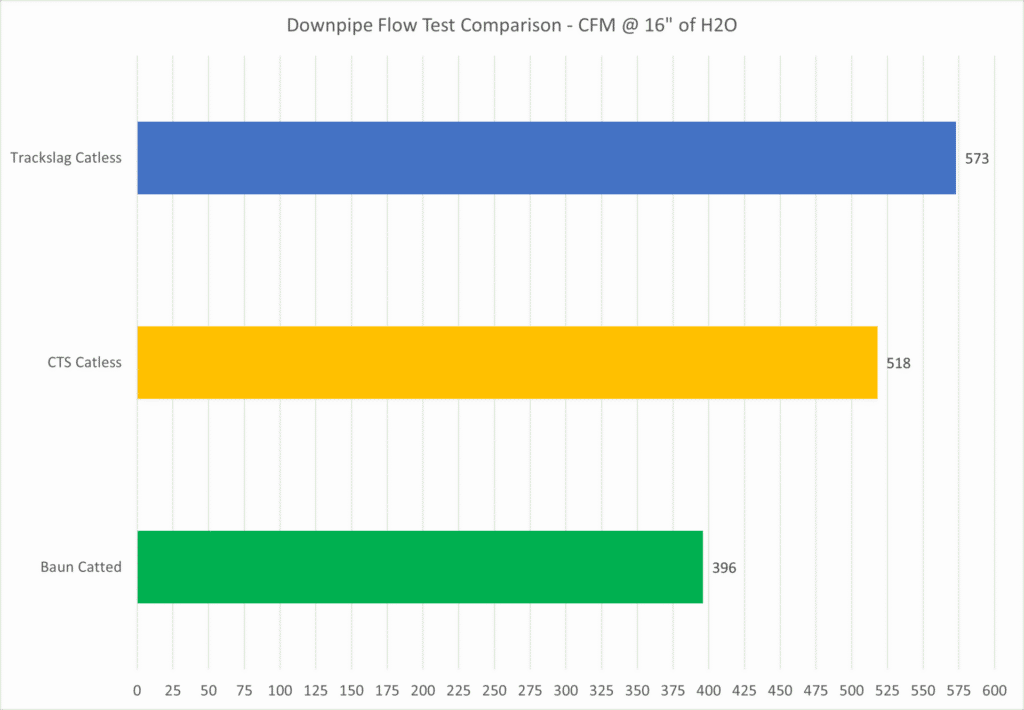
The Trackslag flows slightly more than the CTS downpipe.
Note: I’ve discussed previously that the flow test with the Trackslag used a bellmouth adapter that matched the diameter of the Trackslag inlet, but this is larger than the outlet of the IHI turbo turbine housing; thus, it likely overstates the flowrate of this downpipe.
The on-the-road difference between a catted downpipe and a catless one is around 200 RPM using a larger hybrid turbocharger. Shown below by the difference in the purple (catted) and green (catless) lines.
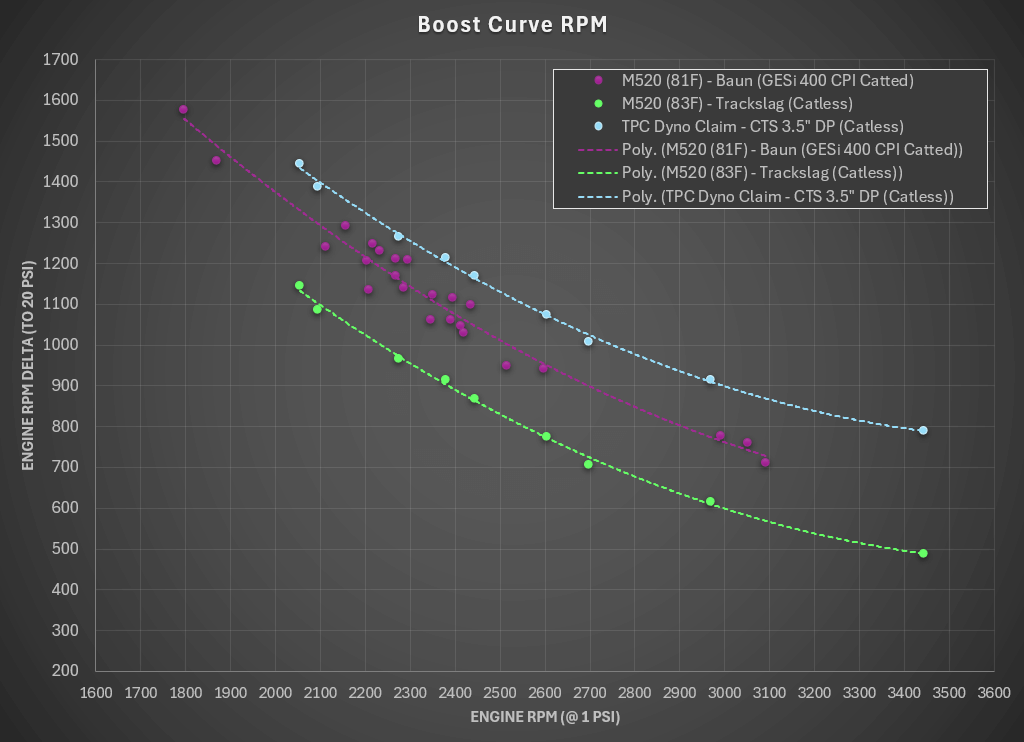
If the claim were valid that the CTS catless had a 300 RPM later boost onset than the Trackslag, the light blue line is where the catless CTS DP would be positioned, worse than the catted downpipe.

Example #2
The second example was encountered when someone sent me a link to the Integrated Engineering charge pipe for the Mk7.
While looking at the flow test results that they published of “Back-to-back flow bench testing” I noticed that the improvement versus the OEM charge pipe decreased as the test depression was increased.
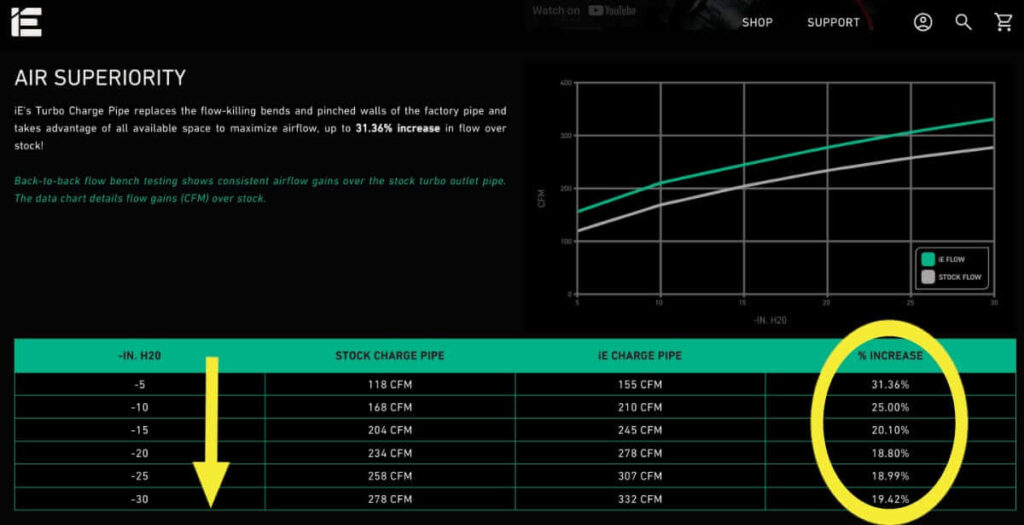
The test depression is the amount of vacuum being generated across the part as air flows through it; as more air flows through the part, the vacuum increases.
Because aerodynamic drag forces increase with increasing airflow, the gain from the aftermarket part should increase with increasing airflow. This is the case with another vendor who publishes flow test data for their charge pipes, do88, shown below.
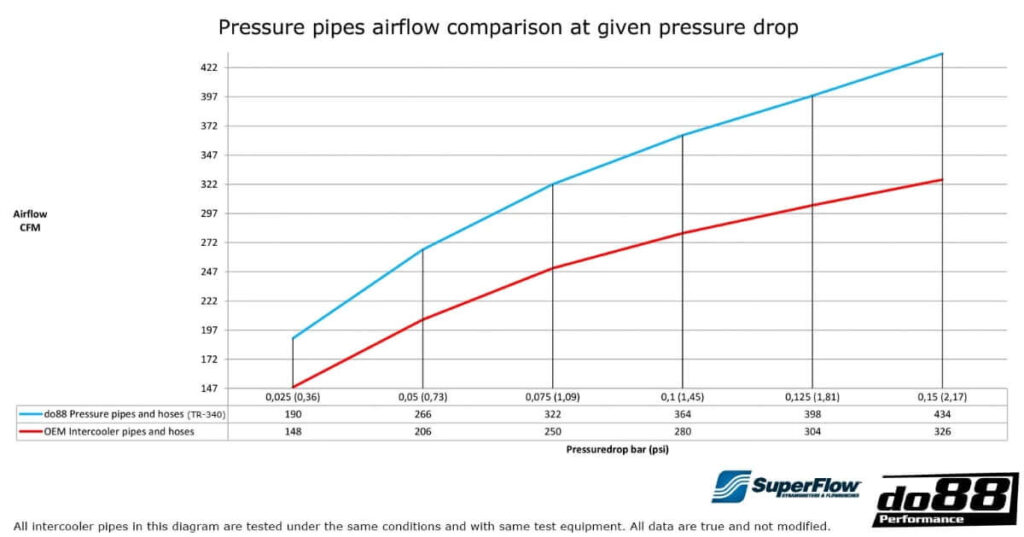
A comparison of the percentage increase in airflow for both products illustrates the disparity in the trends.

do88 trends upward, as expected, while IE trends downward, contrary to how airflow rate affects the amount of pressure drop.
I concluded that they had messed up something in their test process.

Example #3
This third example also came from a fellow owner who had a question about the charge pipe / turbo muffler package offered by Bar-Tek.
Since I’ve already discussed one set of charge pipes, I am only going to address the advertising for the Bar-Tek muffler delete.
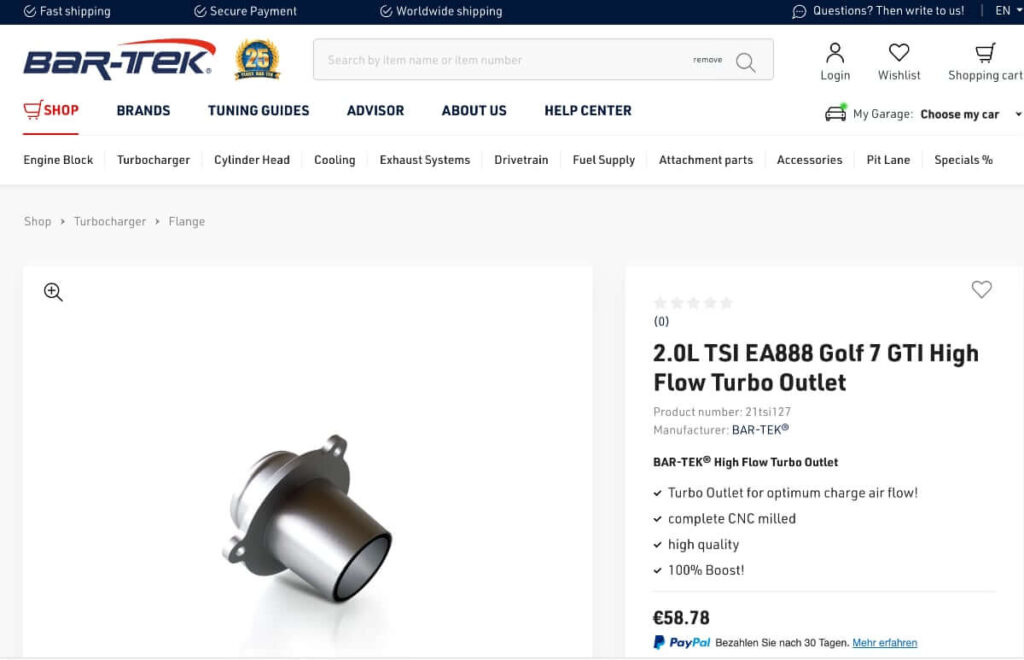
The product description gets interesting, Bar-Tek states about the OEM part:
…the air flow and the flow velocity is also greatly reduced.
This demonstrates a lack of understanding of how the air flows from the turbocharger to the engine.

Unless the Bar-Tek TMD is smaller than the OEM muffler, flow velocity should be reduced through the Bar-Tek part. This is a significant aspect of how aftermarket parts improve performance, as larger parts lead to lower air velocity, which in turn reduces friction drag losses (pressure drop).
They also state:
… there are no more turbulences of the charge air.
Which is pure fantasy. But I sent them a message asking how they measured this anyway.
How did you measure air turbulence to verify the turbulence was eliminated when using the Bar-Tek part?
Jeff @ MyGolfMk7.com
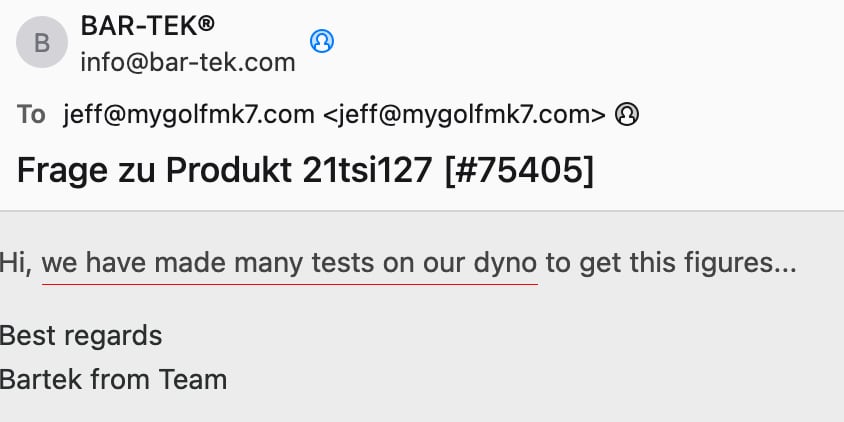
They used a dyno to measure air turbulence, sure. They might as well have said they used a scale or a tape measure; both would have been equally absurd.

Measuring air turbulence requires taking an instantaneous reading of the three-dimensional wind field exiting the TMD at a sufficiently high sampling rate and resolution to detect and quantify fluctuations.
No turbo muffler is eliminating air turbulence. Turbulence occurs when air mixes, and when it is discharged from the compressor blades spinning at over 100,000 RPM, mixing is taking place.
Summary:
All three of these examples help illustrate the challenges consumers face in obtaining useful information to aid in making purchase decisions.
